Chiapas to Acapulco, Mexico

November 20, 2016
Where in the World are Margie and Peter? Acapulco, Mexico!
Many of you…some of you… WELL…maybe a couple
of you have been wondering Where in the World are Margie and Peter?
It’s been quite awhile since we’ve posted anything on our
blog. Our last entry was way back in
June just before we left S/V Peregrina at the Chiapas Marina in Tapachula,
Mexico and headed north to wait out Hurricane Season in Florida.
Spending Hurricane Season in Florida??? NOT the most logical choice one might
say! However, lots of our friends do
their best to GET OUT of Florida in the summer so we had no shortage of
House-sitting/Cat-sitting/Plan
In addition, we
attended Peter’s 45th college reunion at Dartmouth and visited
friends and family all over Florida, New Hampshire, New York, Massachusetts and
the state of Washington. Thank-you, one
and all, for your endless hospitality! We
are truly blessed!
So, all totaled, four months flew by and here we are back
onboard and already on our way up the Pacific coast of Mexico towards the Baja
Peninsula and the Sea of Cortez!
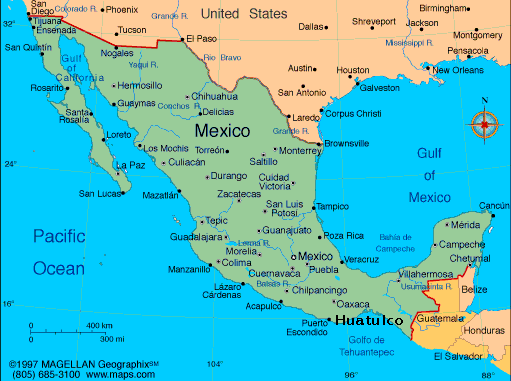
We left Tapachula, Mexico (10 miles west of the Guatemala border) after a week of carefully
watching the weather for a “window” in which to cross the notorious Gulf of
Tehuantepec (Teh-wahn-teh-pek) which is known for its’ gale force
winds. This 265 mile crescent stretch of
coastline lies along the mouth of the narrow Isthmus of Tehuantepec. On the map below, you’ll see the Bay of
Campeche to the north and the Gulf of Tehuantepec to the south.

The strongest winds blow from the north originating in the Gulf of Mexico’s Bay of Campeche. They pass through a 75 mile gap in the Sierra Madre Mountains and get funneled through the Isthmus of Tehuantepec, amplified by the Venturi Effect, and pan out to the SW, S and SE up to 300 nautical miles into the Pacific. You can see this happening in the following image taken from the weather site: www.windyty.com. This is a great site to view global wind patterns. The dark red/purple colors are intense winds.

The bummer here is that, despite all the careful preparation and advance weather forecasts, these “Tehuante-peckers” can sneak up on you quickly and peg the anemometer! We saw a gust of 50 knots a couple times on our passage and experienced sustained winds at 30-40 knots for most of the 50 miles trip through the funnel blast. Not a problem for the good ship, Peregrina, but her crew was pretty uncomfortable and one of us, who will remain anonymous, was downright glum and grumpy!!!
We were told that the key to a safe passage is to sail with
“one foot on the beach.” It makes the
passage a bit longer by hugging the shoreline but sailors can find shelter from
the waves in the narrow lane curving along the “lee” of the land. We tried to stay within a 1/2- to 1/4 mile of
the shoreline because the further out to sea you go, the larger the seas and
stronger the winds. It’s a trade-off
because you must be extra vigilant in looking out for shallow water and
protruding rocks as well as the occasional crazy fisherman. There’s definitely no falling asleep while
“on watch” in the middle of the Tehuantepec!
We also had to watch out for a swarm of the most GI-NORMOUS BEES we have ever encountered! Many landed aboard Peregrina…possibly seeking a lift? Try to imagine; high winds, waves breaking over the boat, navigational challenges and then, to top it all, being chased all over the cockpit by angry GI-NOURMOUS BEES who did not like the insecticide we tried to spray at them.

But, we made it and were delighted to arrive at the Marina Chahué (Chah-way) in the Bay of Hualtulco (Wah-tool-koh) where we could get a full 10 hours of catch-up sleep and meet up with several boats who had left Marina Chiapas before us.
The main town of LaCrucecita has a lovely, tree-shaded Plaza Principal. Great restaurants are found here in the main square as well as in the resort district called Tangolunda. It’s an undiscovered gem right now but the infrastructure is already in place for new homes spiraling up to hills with spectacular views and a very sound ecological plan for sustainable communities.
Hualtuco has a good sized “expat” community already and they are active in the local community operating small businesses and volunteering with local organizations and charities. We enjoyed a visit to El Sueno Zapoteco, a lovely gift shop, run by Mexicans and staffed by volunteers from many different countries. Operating under the umbrella of the US-based Bacaanda Foundation, El Sueno Zapoteco is dedicated to building or remodeling rural schools throughout the state of Oaxaca and, in particular, for the indigenous people known as Zapotecs who live in the mountainous areas of the Sierra Madre. They lack school supplies and an adequate learning environment. The Rural Schools Project is helping to meet that need.
The shop features a huge recreation of Noah’s Ark with two of every animal imaginable on board for the ride. Children (of all ages) LOVE it!
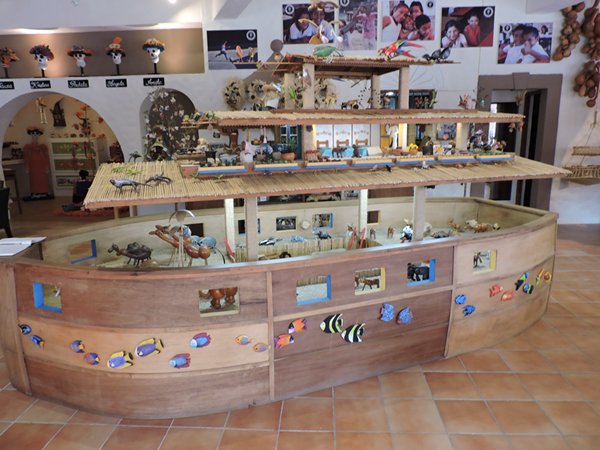
Here are two of the young artisans at El Sueno Zapoteca who
carve and paint beautiful hand- made decorations with whimsical themes. We bought several and made a donation to the
Foundation hoping that, with education, fewer Mexicans will have to make the
difficult journey to the United States to find a better life. It’s one small way we can help and more
important now than ever! Check out www.bacaanda.org.
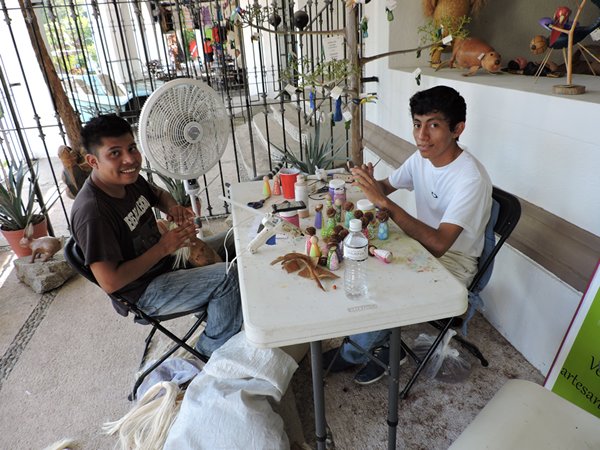
We were in Hualtuco for the celebration of the Day of the
Dead (Dia de los Muertos) on November
2nd and found many examples of how Mexicans commune with their
dearly departed. Aside from picnics at cemeteries,
many beautiful altars appear in homes, on the streets and public places in
honor of those who have passed. They are
decorated with “ofrendas” including flowers - mostly marigolds - pictures,
items of clothing or anything of special significance to the person of
honor.
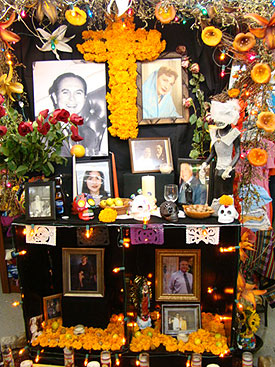
Items of fruit, special foods, cigarettes, mezcal or tequila might also be placed on the altar as an offering on this day when Mexicans believe their loved ones return from the dead. It is important that the living lay out an elaborate spread to celebrate the life of those who have gone on before them.
Hualtuco was a good departure point for an excursion to Oaxaca City in the mountains of the Sierra Madre. We set off in a rental car with Linda and David Witham from the catamaran, Purr-fect.
Oaxaca is a beautiful colonial city listed as a World
Heritage site. It is lovely and cool in
the evenings and pleasantly warm during the day at this time of year. We stayed in a charming little hotel called
Parador del Dominico right in the heart of the old city for just $40 a night
with all the amenities including breakfast!
Highly recommend this 32 room boutique hotel. www.paradordeldominico
During the day, we drove around to archaeological sites in Mitla , Dainzu and Monte Alban (500 BC-900 AD) where the ancient Zapotecs ruled Oaxaca’s central valley. Mitla was unique among these sites for the elaborate and intricate mosaics and geometric designs that cover tombs, panels, friezes and even entire walls. These mosaics are made with small, finely cut and polished stone pieces which have been fitted together without the use of mortar. No other site in Mexico has this. The red paint seen here is original.
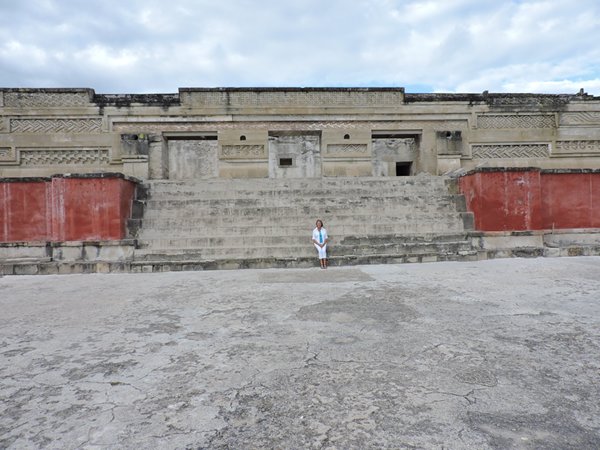
Dainzu, seen below, was built into the hillside with terraces and spectacular views.

In Monte Alban, we visited the remains of stepped temples, palaces, ball courts, observatories, burial sites and a massive central plaza. At its height, Monte Alban and the surrounding villages had a population of approximately 25,000. This civilization had the first writing system in Mexico as well as the first written calendar.

In the picture below you will see the ballcourt on the left side. It has the form of a T with two sloping sides on either side. The players (2-4 on a team) struck the ball with only their torso and the hips which were covered with leather pads. The ball was made of solid rubber and weighed as much as 4 kg (9 lbs). It was played up and down a long narrow court with angled sides for ricocheting the ball. The ballgame had important ritual significance and major games often featuring human sacrifice. Sometimes, the losers paid the ultimate price but, other times, the captain of the winning team would lose his head to appease the Gods. Seems like a tough way to make a living!

To get in our share of Guinness World Records, we visited the biggest tree in the world, El Arbol del Tule! Beloved by Oaxacans, this Montezuma Cypress is said to be 2000 years old. California’s General Sherman Sequoia may be ahead in total volume but, at close to 188 feet in circumference, El Arbol del Tule has bragging rights to the world’s largest trunk! It dwarfs the charming 17th century village church beside which it towers.


We stopped for a dip at the mineral springs of Hierve El Agua where natural infinity pools have spilled over to the cliff’s edge for millennia. The mineral formations that have built up over time resemble massive frozen waterfalls. The views were spectacular!

Back in Oaxaca, we strolled through the city, exploring all the neighborhoods and the beautiful churches, museums and people-watching plazas. It is truly one of the most beautiful, peaceful places we’ve seen in quite some time.
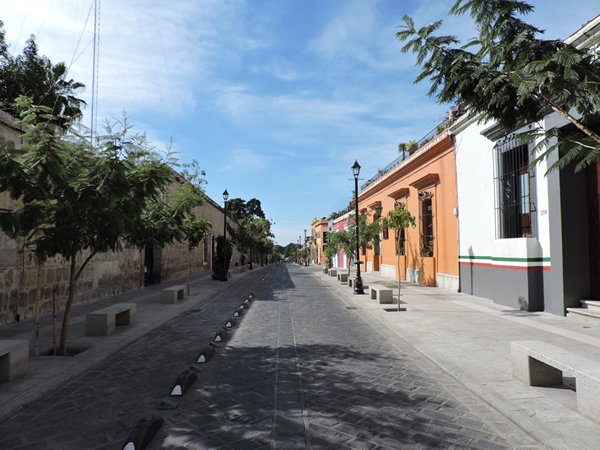

We witnessed two wedding parties marching down the streets with the famous Oaxacan Monos de Calendas (huge dancing puppets) leading the way. These paper mache puppets (also called Gigantes) are common at just about every fiesta in Oaxaca and throughout Mexico. I had to take this shot off Google Images because our night shots didn’t come out so well but this is a good example of the “Monos” with the band and the wedding party following along on the way to the reception.
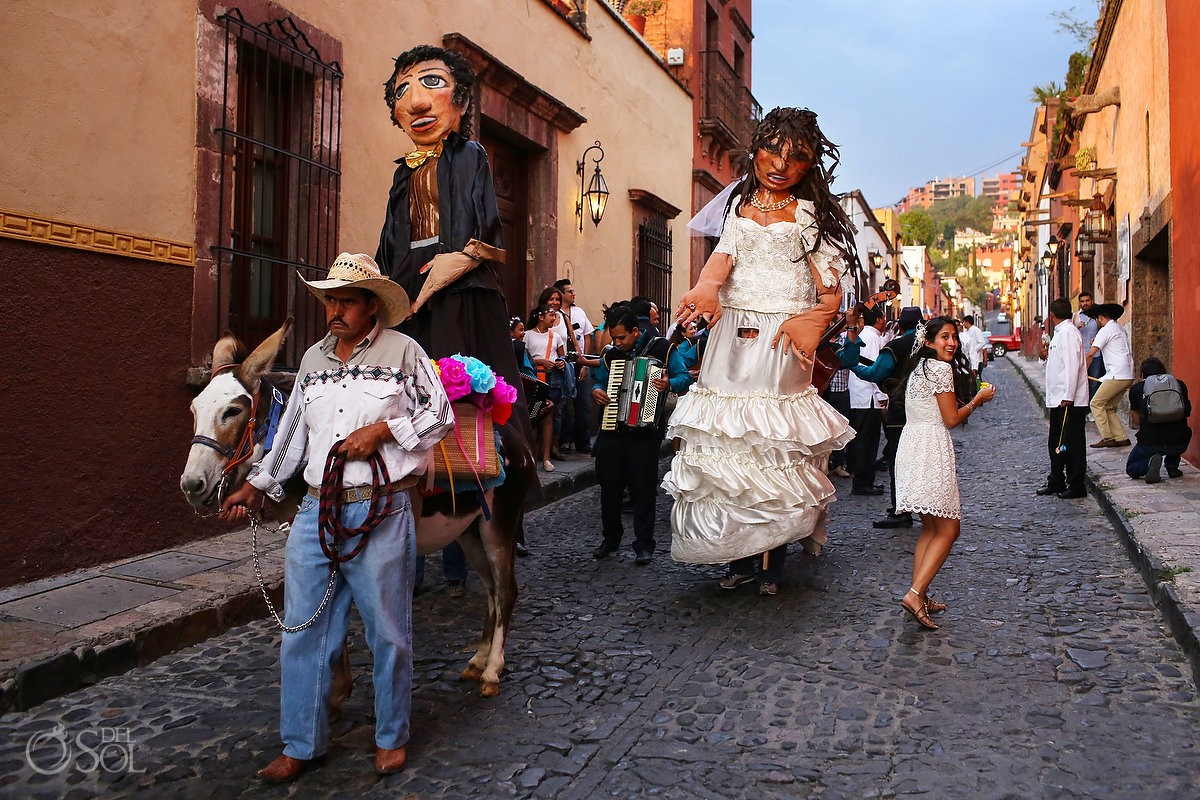
The puppet’s faces are sculpted and painted by hand and the costumes made of taffeta and other shiny materials in mismatched designs often in bright contrasting colors. The bodies have a skeleton fashioned from Carrizo, a native reed similar to bamboo but lighter so that the carrier/dancer inside can keep up with the marching beat. It is thought that the first giant puppets were created by workers on the haciendas during the colonial period. For comic relief, the indigenous “slaves” made giant puppets that mocked their bosses when they were not around.
One last stop on the way home was in a little town called Ocotlán, known for artisans in many disciplines but none more famous than the four Aguilar sisters and their families who create whimsical pottery figurines with all sorts of unusual motifs.
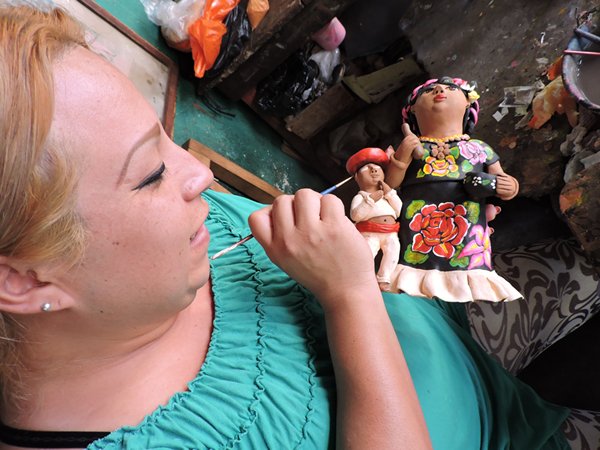
Back at the marina, we made the decision to move on. In truth, we would have loved to stay longer
as Hualtuco really did intrigue us but, sad to say, Marina Chahué was falling
apart at the seams! The docks are
literally breaking apart and most of the large cleats used to secure the
boatlines are about to be pulled off their hinges!
The marina was designed poorly to begin
with. There’s not enough of a breakwater
to combat the swell that flows in and out 24/7 and that is taking its
toll. We were constantly adjusting our
lines because of the stretching that resulted from all the sea action and we
were jerked and bounced around when
trying to sleep or just move about the cabin.
It was like living in a washing machine!
This marina is run by the government not a private operation and while they spend tons of money on countless security guards (for what, we never knew), they aren’t spending squat on maintenance! A good marina management company and, more likely, a new location are needed ASAP!
So, we’ve eased on down the road to Acapulco which I’ll write more about in an upcoming post. In the meantime, I’ll let Peter tell you the story of our misadventures in an anchorage called Chachacual. I won’t divulge the details of this story but, just let’s say the Captain had one of his “stupid moments” followed, luckily, by a happy ending…
--
--
--